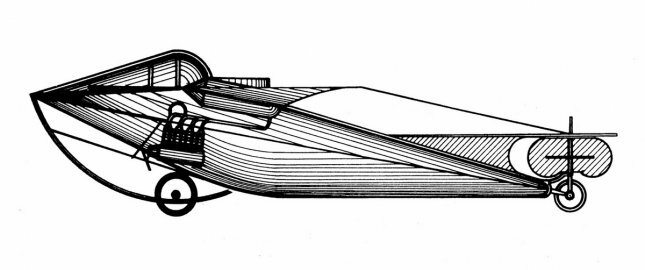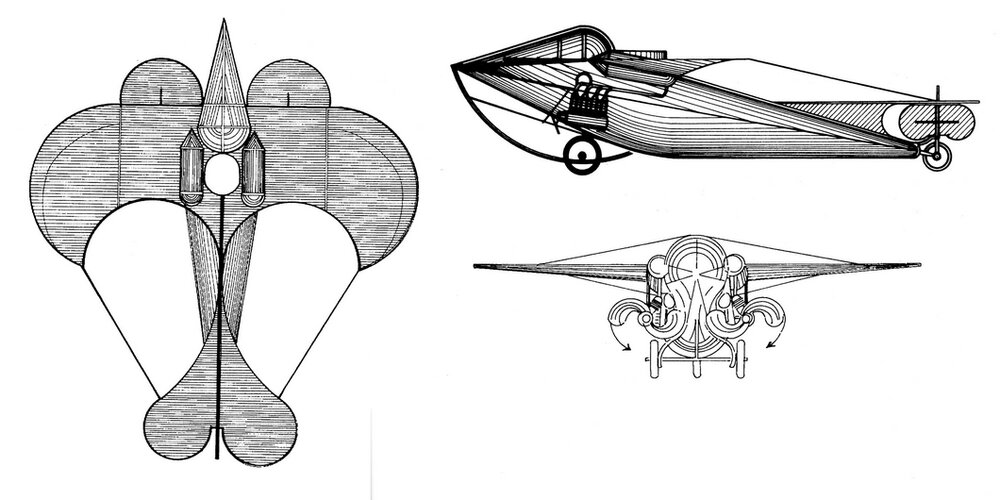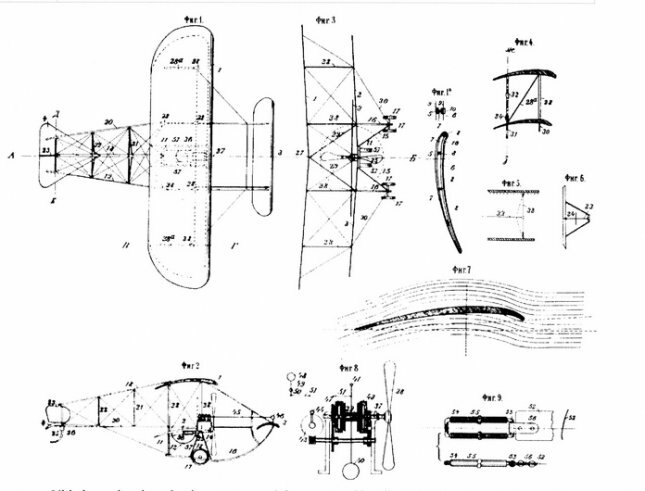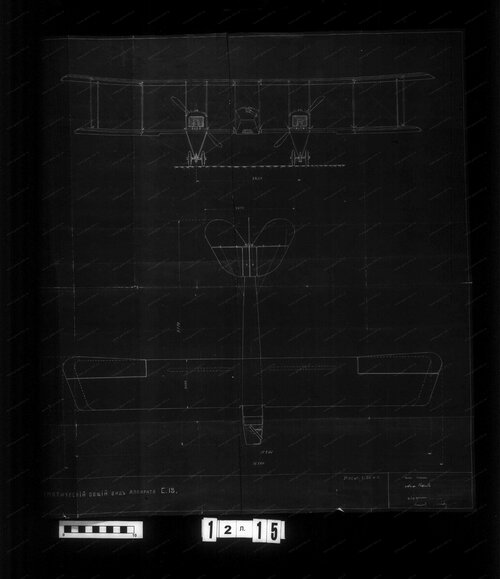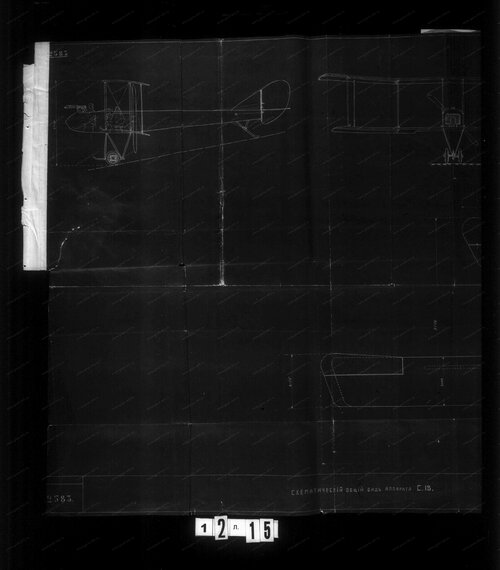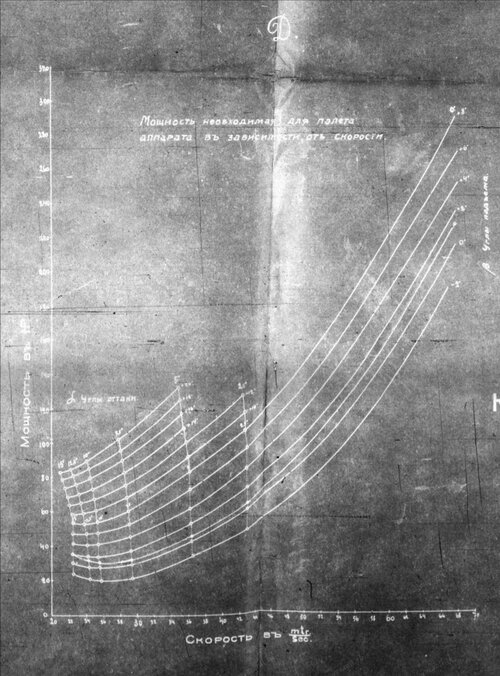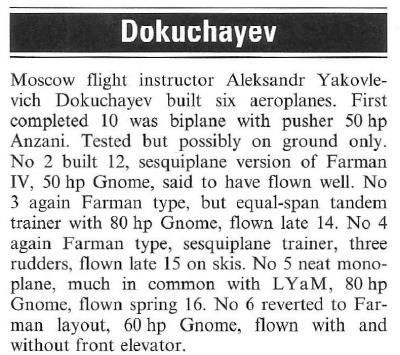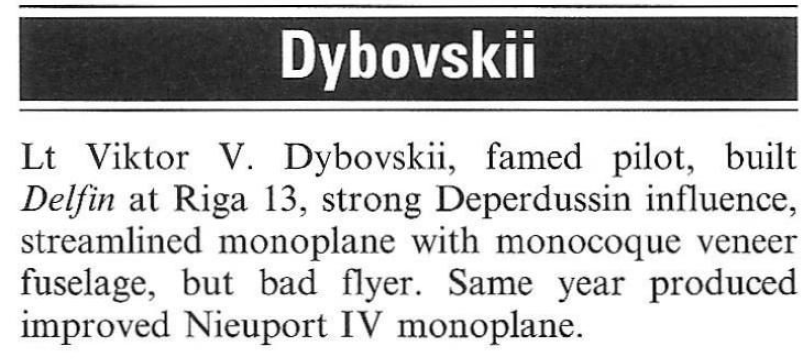You are using an out of date browser. It may not display this or other websites correctly.
You should upgrade or use an alternative browser.
You should upgrade or use an alternative browser.
Various Russian Prototypes and Projects During & Pre-WW1
Bottleship
ACCESS: Secret
- Joined
- 30 June 2019
- Messages
- 493
- Reaction score
- 1,259
Suggestion of worker Stepan Markelovich Ivanov, 16 Marth 1917:




Ivanov projected his apparatus in 1911.
"Apparatus as a mnogodyuznaya model", "dyuza" (Rus. "дюза") - old Russian term for rocket nozzle, "mnogodyuznaya" = "multi-nozzle". "Advantages of my apparatus - flight speed... ...colossal payload". Idea - destroy of enemy army, plants, etc. "Enough of such apparatuses to destroy the plants of the enemy". First Russian jet bomber? (but, after Teleshev 1867 jet project... Why not?) Multi-nozzle... Like a NAA XB-70? Or not?
And, other project of Ivanov in this document - triple-barrel AA small-caliber gun.
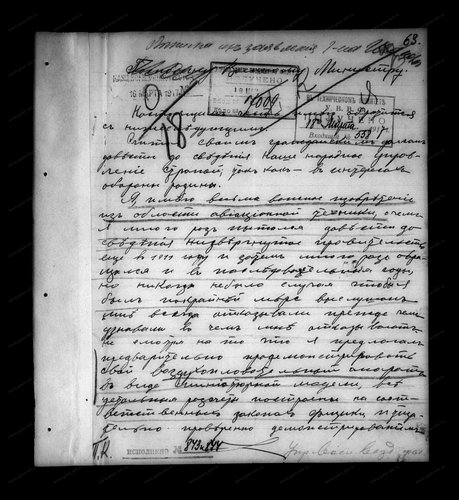
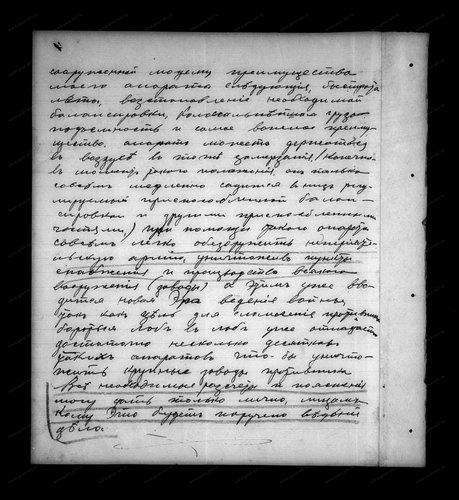
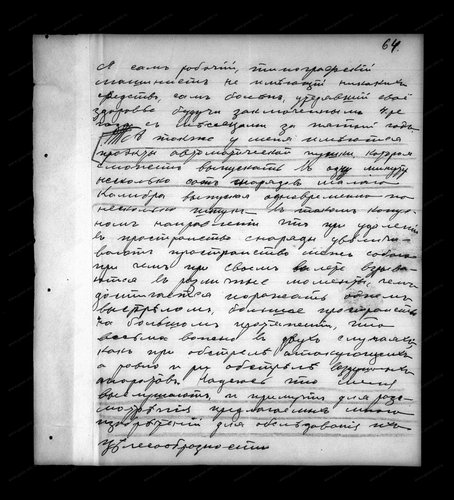
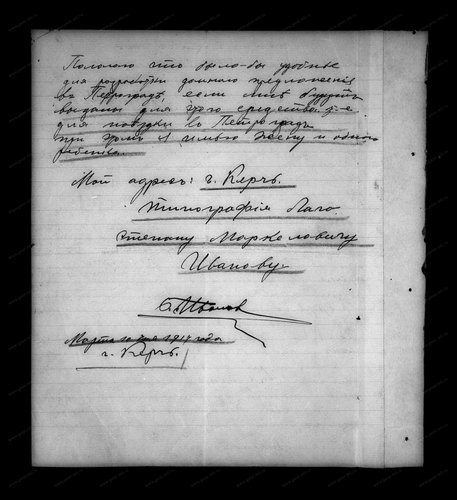
Ivanov projected his apparatus in 1911.
"Apparatus as a mnogodyuznaya model", "dyuza" (Rus. "дюза") - old Russian term for rocket nozzle, "mnogodyuznaya" = "multi-nozzle". "Advantages of my apparatus - flight speed... ...colossal payload". Idea - destroy of enemy army, plants, etc. "Enough of such apparatuses to destroy the plants of the enemy". First Russian jet bomber? (but, after Teleshev 1867 jet project... Why not?) Multi-nozzle... Like a NAA XB-70? Or not?
And, other project of Ivanov in this document - triple-barrel AA small-caliber gun.
Bottleship
ACCESS: Secret
- Joined
- 30 June 2019
- Messages
- 493
- Reaction score
- 1,259
I heard about of this idea in WW1 period, but, I can't found data.
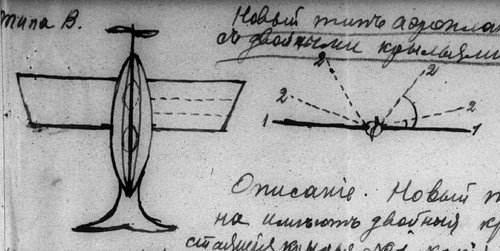
Author - Aram Ter-Grigoryevich Dadian, 16 September 1916. "New type of monoplane with double wings" (№2 - moving wings, that can fold into a №1 wings), with new propeller, for speed, "I think", to 500 versta per hour (533.4 kmph).
...
About apparatuses of Dmovskiy:
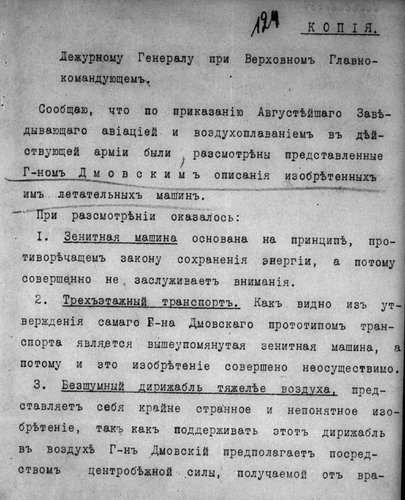
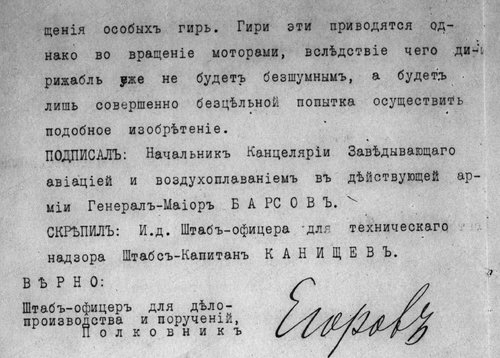
1. "The anti-aircraft machine is based on a principle contrary to the law of conservation of energy, and therefore doesn't deserve attention"
2. "The triple-deck transport based on AA machine..."
3. "Silent dirigible heavier than air - very strange and incomprehensible invention... ...keep it in the air due to centrifugal force of special kettlebells. These kettlebells driven by motors, because of this, the dirigible willn't be silent..."
Bottleship
ACCESS: Secret
- Joined
- 30 June 2019
- Messages
- 493
- Reaction score
- 1,259
I found documents:About weird Dubenskiy "air torpedo"
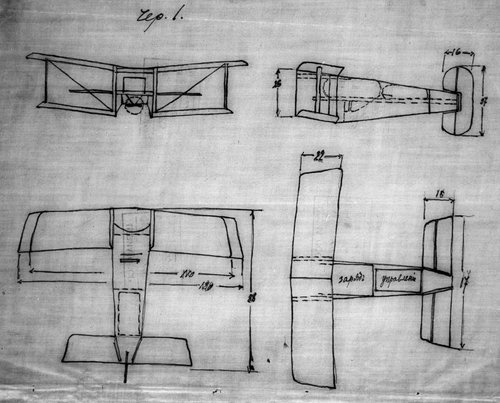
Variants of type of "torpedo" - glider, or, plane with engine
Variants of control - by wires, by radio, or self-targeting.
Variants of start - from ship, or from airplane
Control system:
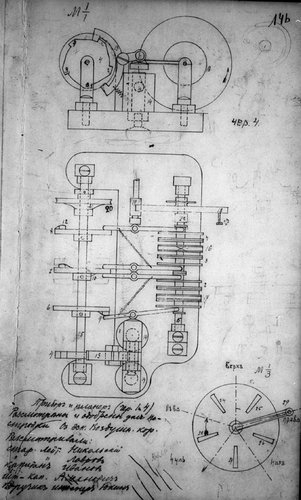
Mechanical "ear" for self-targeting:
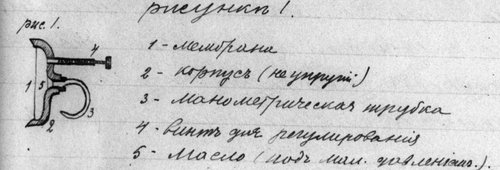
1. Membrane
2. Body
3. Manometric tube
4. Adjustment srew
5. Oil (under pressure)
Standart load - 10-15 kg, range with 10 kg of wires - 1000 m.
Bottleship
ACCESS: Secret
- Joined
- 30 June 2019
- Messages
- 493
- Reaction score
- 1,259
About Guminskiy "Kampo" airplane, 21 Jule 1917:


Briefly - "the author understands absolutely nothing". I would have skipped this project if not for points 2 and 3.
2. "...Increase in the number of revolutions of the main wheel of the engine by 32,400 times...", "...speed on land 17 597 kmph on wheels..."
3. "...unnecessary parts of the apparatus and motor are piled up in huge numbers, randomly...", "...gears, chains, extra shafts, which represent a lot of weight, dominate..."
This is similar to the description of the SCP object. And, it's after a project of "Immeasurable flying machine"... By the way, I found a review about the project of another freak. "New means of fighting the enemy" are not even described, but it is said that "these are projects of a completely abnormal person"...
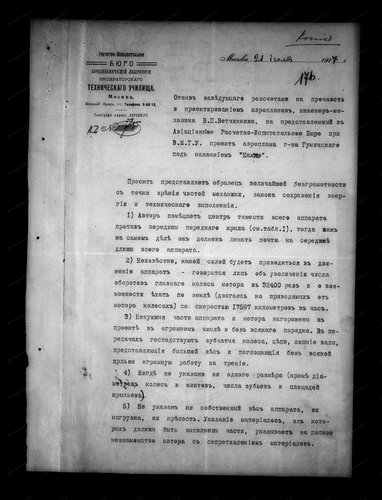
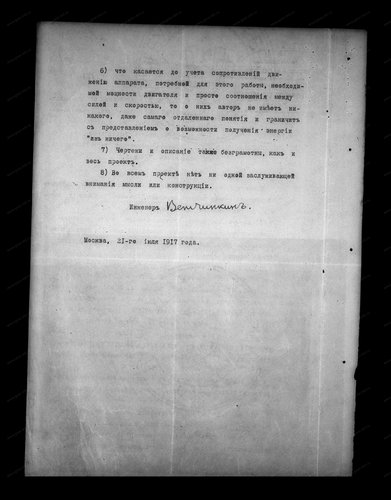
Briefly - "the author understands absolutely nothing". I would have skipped this project if not for points 2 and 3.
2. "...Increase in the number of revolutions of the main wheel of the engine by 32,400 times...", "...speed on land 17 597 kmph on wheels..."
3. "...unnecessary parts of the apparatus and motor are piled up in huge numbers, randomly...", "...gears, chains, extra shafts, which represent a lot of weight, dominate..."
This is similar to the description of the SCP object. And, it's after a project of "Immeasurable flying machine"... By the way, I found a review about the project of another freak. "New means of fighting the enemy" are not even described, but it is said that "these are projects of a completely abnormal person"...
Bottleship
ACCESS: Secret
- Joined
- 30 June 2019
- Messages
- 493
- Reaction score
- 1,259
Also, information about other projects:
- About Kotov "samolet's" - suggestion of use of this schemes to create a glider-bombs or airplane-bombs
- About Dubenskiy "torpedo" - also, one of variants of start - from mortar (?)
...
Also, I found project of ring turbine, for air injection. Payload of engine with 1400 HP ICE engines for work of turbine - 10 tons. Reaction of engineers - "Actually, need a 4200 HP for this turbine".
...
Nezhdanovskiy, later 1890th - early 1900th, project of airplane, like a Voisin 1908.
- About Kotov "samolet's" - suggestion of use of this schemes to create a glider-bombs or airplane-bombs
- About Dubenskiy "torpedo" - also, one of variants of start - from mortar (?)
...
Also, I found project of ring turbine, for air injection. Payload of engine with 1400 HP ICE engines for work of turbine - 10 tons. Reaction of engineers - "Actually, need a 4200 HP for this turbine".
...
Nezhdanovskiy, later 1890th - early 1900th, project of airplane, like a Voisin 1908.
Bottleship
ACCESS: Secret
- Joined
- 30 June 2019
- Messages
- 493
- Reaction score
- 1,259
List of inventions of Efim Evgrafovich Gorin, 1921 (many inventions - from pre-WW1 period):

№40 - "Flying apparatus with centrifugal-rotating plans" ("plan" = wings?), by other documents - like a helicopter, 1915.
№41 - "Postal-passenger aeroship", with VTOL.
Gorin was a very interesting man... №22 - Electric cane "Dont-touch-me", №27 - Method of manufacturing talking objects, №30 - Mechanical watchman protecting valuable items from thieves, №42 - Project of electric steel man-automat, №44 - Rings of Saturn around the Earth's equator... And, early Scype, fax machine, live television, color electrographic camera, mental phone...
About Gorin:

 ulpressa.ru
...
ulpressa.ru
...
N. N. Benardos, flying machine, 1890th:

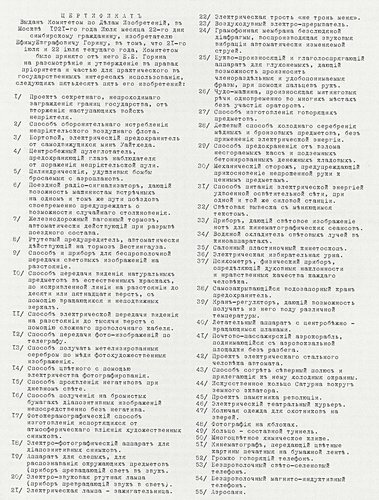
№40 - "Flying apparatus with centrifugal-rotating plans" ("plan" = wings?), by other documents - like a helicopter, 1915.
№41 - "Postal-passenger aeroship", with VTOL.
Gorin was a very interesting man... №22 - Electric cane "Dont-touch-me", №27 - Method of manufacturing talking objects, №30 - Mechanical watchman protecting valuable items from thieves, №42 - Project of electric steel man-automat, №44 - Rings of Saturn around the Earth's equator... And, early Scype, fax machine, live television, color electrographic camera, mental phone...
About Gorin:

«Счетчик для баллотировки», стереоскопический телевизор, прототип ксерокса и многое другое... Brandergofer: Ко дню рождения слепого симбирского изобретателя-самоучки Ефима Евграфовича Горина
27 марта (8 апреля по н.с.) 1877 года родился талантливый симбирский изобретатель-самоучка Ефим Евграфович Горин. История его жизни невольно порождает множество «если бы». Если бы за его плечами было не 3 класса начальной школы, а университет? Если бы он имел возможность серьезно заниматься наукой,
N. N. Benardos, flying machine, 1890th:

Bottleship
ACCESS: Secret
- Joined
- 30 June 2019
- Messages
- 493
- Reaction score
- 1,259
Project of Gerasimov turbojet engine for rockets and planes, 1909 drawing (patented in 1916 for aircrafts):

...
Plan of experimental model of Nikolskiy 1913-1914 turboprop engine:

Planned a built of "Ilya Muromets" with four 160 HP Nikolskiy engine, first engine constructed in Russo-Baltique plant, but, around a WW1 wasn't ended. For engine was created a new metal alloy - steel + aluminium + enamel.
Also, Nikolskiy projected a monoplane with jet engines inside wings.
...
Kuz'minskiy steamturboprop engine:

No 1 - water. First model builted in 1890s. Kuz'minskiy planned a built an airship with these engine (also, projected helicopter with steamturboprop engine). I heard about variant without water. Kuz'minskiy died in 1900, and jet airship wasn't ended.
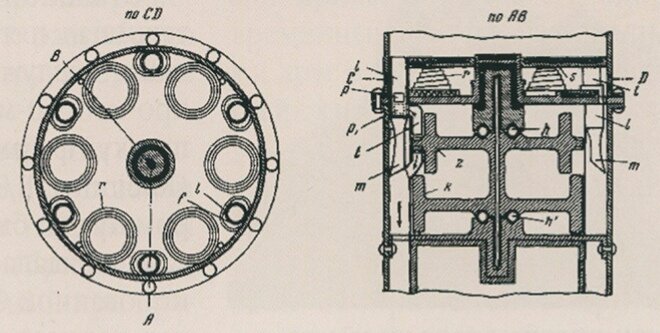
...
Plan of experimental model of Nikolskiy 1913-1914 turboprop engine:
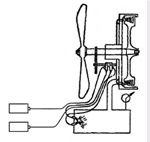
Planned a built of "Ilya Muromets" with four 160 HP Nikolskiy engine, first engine constructed in Russo-Baltique plant, but, around a WW1 wasn't ended. For engine was created a new metal alloy - steel + aluminium + enamel.
Also, Nikolskiy projected a monoplane with jet engines inside wings.
...
Kuz'minskiy steamturboprop engine:
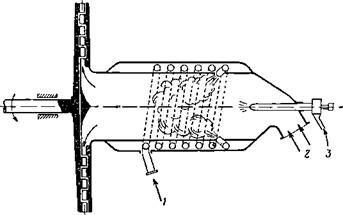
No 1 - water. First model builted in 1890s. Kuz'minskiy planned a built an airship with these engine (also, projected helicopter with steamturboprop engine). I heard about variant without water. Kuz'minskiy died in 1900, and jet airship wasn't ended.
Last edited:
- Joined
- 26 May 2006
- Messages
- 34,558
- Reaction score
- 15,348
Hi,
On July 15, 1916, M. Bieliński made an offer to the Main Military and Technical Board (GWTU) of the Ministry of War of Russia to build an aircraft of his system, characterized by the possibility of rotating the lifting surfaces - to maintain the lateral stability of the apparatus in flight.
On July 15, 1916, M. Bieliński made an offer to the Main Military and Technical Board (GWTU) of the Ministry of War of Russia to build an aircraft of his system, characterized by the possibility of rotating the lifting surfaces - to maintain the lateral stability of the apparatus in flight.
samolotypolskie.pl - Bieliński samolot
www.samolotypolskie.pl
Last edited:
- Joined
- 26 May 2006
- Messages
- 34,558
- Reaction score
- 15,348
Hi,
Pioneering bomber plane project. Poland / Russia.
Ludwik Władysław Bigel on February 26, 1914, in a letter to the governor of Bessarabia, stated that he had developed a design for the model of which he had made and conducted flight tests with it. Speaking of its advantages, he pointed out that he introduced a mechanism connected to the controls, which made it possible to control the flight without the participation of a pilot. In the end, he emphasized that he was in poverty. That is why he asks for help in critical moments, declaring that he can present his invention and demonstrate its operation at any time.
On March 13, 1914, the Bigla project was evaluated by the Technical Commission of the All-Russian Aeroclub - at the request of the governor of Bessarabia, who on July 5, 1914 also sent it to the Aviation Department of the General Staff with the remark that it was not possible to finance Bigla's request. I am sending it to you. Perhaps you will show interest. The project was assessed by the Technical Committee of the Main Military and Technical Board (GWTU). On July 17, 1914 he asked Bigel for a description, drawings and calculations, and if possible, a model of the apparatus. On October 23, 1914, Bigel sent to the address of the Commander-in-Chief of the Russian Army a laconic letter, in which he indicated that his characteristic apparatus was two control units and so lightly controlled that the pilot could put his hands on his lap. He also indicated that his plane can be used to bombard ground targets, it is enough to install a bomb ejector. He offered to offer additional explanations at last.
On November 13, 1914, the GWTU Technical Committee returned the materials regarding Bigla's offer to the Commander-in-Chief of Staff, considering that his response to the call of July 17 was insufficient. From the inventor's correspondence, it is not known what the design and principle of operation of the airplane flight control mechanism and the automatic pilot type device were.
Pioneering bomber plane project. Poland / Russia.
Ludwik Władysław Bigel on February 26, 1914, in a letter to the governor of Bessarabia, stated that he had developed a design for the model of which he had made and conducted flight tests with it. Speaking of its advantages, he pointed out that he introduced a mechanism connected to the controls, which made it possible to control the flight without the participation of a pilot. In the end, he emphasized that he was in poverty. That is why he asks for help in critical moments, declaring that he can present his invention and demonstrate its operation at any time.
On March 13, 1914, the Bigla project was evaluated by the Technical Commission of the All-Russian Aeroclub - at the request of the governor of Bessarabia, who on July 5, 1914 also sent it to the Aviation Department of the General Staff with the remark that it was not possible to finance Bigla's request. I am sending it to you. Perhaps you will show interest. The project was assessed by the Technical Committee of the Main Military and Technical Board (GWTU). On July 17, 1914 he asked Bigel for a description, drawings and calculations, and if possible, a model of the apparatus. On October 23, 1914, Bigel sent to the address of the Commander-in-Chief of the Russian Army a laconic letter, in which he indicated that his characteristic apparatus was two control units and so lightly controlled that the pilot could put his hands on his lap. He also indicated that his plane can be used to bombard ground targets, it is enough to install a bomb ejector. He offered to offer additional explanations at last.
On November 13, 1914, the GWTU Technical Committee returned the materials regarding Bigla's offer to the Commander-in-Chief of Staff, considering that his response to the call of July 17 was insufficient. From the inventor's correspondence, it is not known what the design and principle of operation of the airplane flight control mechanism and the automatic pilot type device were.
samolotypolskie.pl - Bigel samolot
www.samolotypolskie.pl
Dilandu
I'm dissatisfied, which means, I exist.
Variants of type of "torpedo" - glider, or, plane with engine
Variants of control - by wires, by radio, or self-targeting.
Variants of start - from ship, or from airplane
Most interesting! I wonder what could be used as "self-targeting". Some sort of primitive acoustic seeker, maybe?
- Joined
- 26 May 2006
- Messages
- 34,558
- Reaction score
- 15,348
Hi,
Pioneering bomber plane Project. Poland / Russia.
On May 26, 1910, Bolesław Dmowski (by letter sent from Łomża) informed the Tsar of Russia that he had invented a biplane-type flying apparatus with an automatic stability stabilizer. In a letter to the Chief Engineering Board (GIU) of May 26, 1911, in response to the call of August 21, 1910 for details of his invention, he informs that he built a model of his aircraft with a stabilizer, which is said to have good flight properties . He confirmed that his apparatus can be used for bombing, he also lands and touches the ground properly. He declared his will to explain the secrets of the invention personally and to come to St. Petersburg if the travel expenses were covered by the GIU.
On July 12, 1911, the GIU asks Dmowski to pay a stamp duty for considering his request to help him implement the invention with two fiscal stamps worth 75 copies each. August 17, 1911 Dmowski pays the fee.
On November 8, 1911, the GIU informs Dmowski that, in the absence of drawings and a detailed description of the project, his request to finance the costs of his trip to St. Petersburg in order to provide personal explanations and demonstration of the airplane model with an automatic stability stabilizer using the pendulum action was rejected.
Pioneering bomber plane Project. Poland / Russia.
On May 26, 1910, Bolesław Dmowski (by letter sent from Łomża) informed the Tsar of Russia that he had invented a biplane-type flying apparatus with an automatic stability stabilizer. In a letter to the Chief Engineering Board (GIU) of May 26, 1911, in response to the call of August 21, 1910 for details of his invention, he informs that he built a model of his aircraft with a stabilizer, which is said to have good flight properties . He confirmed that his apparatus can be used for bombing, he also lands and touches the ground properly. He declared his will to explain the secrets of the invention personally and to come to St. Petersburg if the travel expenses were covered by the GIU.
On July 12, 1911, the GIU asks Dmowski to pay a stamp duty for considering his request to help him implement the invention with two fiscal stamps worth 75 copies each. August 17, 1911 Dmowski pays the fee.
On November 8, 1911, the GIU informs Dmowski that, in the absence of drawings and a detailed description of the project, his request to finance the costs of his trip to St. Petersburg in order to provide personal explanations and demonstration of the airplane model with an automatic stability stabilizer using the pendulum action was rejected.
samolotypolskie.pl - Dmowski samolot
www.samolotypolskie.pl
- Joined
- 26 May 2006
- Messages
- 34,558
- Reaction score
- 15,348
Hi,
Pioneering aircraft design. Poland / Russia,
On December 30, 1909, Edmund Feder sent the minister of war a plan for a monoplane with a description. He indicated that its implementation requires funds that he does not have, especially for the purchase of a 15-22 kW (20-30 HP) engine. He asked for a subsidy of 1500 rubles. to build this plane.
It is known from the enclosed documentation that its apparatus - monoplane in a tandem wing configuration, duck-type, with a forward deflected rudder, was to have the following technical characteristics: length - 9 m, span - 10.0 m with a chord 3.0 m, span of the front lobe - 3.0 m with a chord 1.5 m, plate tail height, tail, with a span of 1.5 m and chord 3.0 m (including a hinged rudder with a chord 1.5 m), plate tail tail in the direction of 3.0 m long and 1.5 m high (including a hinged rudder with a chord 1.5 m).
On January 29, 1910, the Chief Engineering Board replied to the Federal that, in the opinion of the experts evaluating the project, his proposals were not original, and therefore his request for a subsidy was rejected.
In a letter of February 7, 1910, Feder argued with this assessment, arguing that specialists accusing the project of a lack of originality were wrong, because no similar apparatus had been built in Russia so far. He upheld the request for a subsidy for the construction of the plane, pointing out that it was not much for the Ministry, and if his offer was rejected again, he asked for the plan of his plane to be returned.
The Chief Engineering Board returned the drawings of the plane to the Federation, and in a letter of February 18, 1910, it confirmed its position contained in the letter to the inventor of January 29.
Pioneering aircraft design. Poland / Russia,
On December 30, 1909, Edmund Feder sent the minister of war a plan for a monoplane with a description. He indicated that its implementation requires funds that he does not have, especially for the purchase of a 15-22 kW (20-30 HP) engine. He asked for a subsidy of 1500 rubles. to build this plane.
It is known from the enclosed documentation that its apparatus - monoplane in a tandem wing configuration, duck-type, with a forward deflected rudder, was to have the following technical characteristics: length - 9 m, span - 10.0 m with a chord 3.0 m, span of the front lobe - 3.0 m with a chord 1.5 m, plate tail height, tail, with a span of 1.5 m and chord 3.0 m (including a hinged rudder with a chord 1.5 m), plate tail tail in the direction of 3.0 m long and 1.5 m high (including a hinged rudder with a chord 1.5 m).
On January 29, 1910, the Chief Engineering Board replied to the Federal that, in the opinion of the experts evaluating the project, his proposals were not original, and therefore his request for a subsidy was rejected.
In a letter of February 7, 1910, Feder argued with this assessment, arguing that specialists accusing the project of a lack of originality were wrong, because no similar apparatus had been built in Russia so far. He upheld the request for a subsidy for the construction of the plane, pointing out that it was not much for the Ministry, and if his offer was rejected again, he asked for the plan of his plane to be returned.
The Chief Engineering Board returned the drawings of the plane to the Federation, and in a letter of February 18, 1910, it confirmed its position contained in the letter to the inventor of January 29.
samolotypolskie.pl - Feder samolot
www.samolotypolskie.pl
- Joined
- 26 May 2006
- Messages
- 34,558
- Reaction score
- 15,348
Hi,
Pioneering and military aircraft design. Poland / Russia.
On March 13, 1917, Ryszard Gumiński asked the Russian Minister of War, Alexander I. Gucchkov, by telegram to commission him by the army to build a new type of steam locomotive and plane.
This request was sent to the Military-Air Fleet Board (UWWF), which passed the information about the locomotive to the Main Military-Technical Board (GWTU). At the same time, on March 17, Gumiński was asked to provide the UWWF Technical Committee with a description and drawings of his plane - necessary to evaluate his offer. Gumiński did not reply to this letter, perhaps he did not receive it. On May 30, 1917, he again telegraphed to the minister of war - already General Kerensky - that the army started building the plane under his direction in the workshops of the Aeronautical Park in Nowa Wieś near St. Petersburg. In a letter to Gumiński of June 5, UWWF asked him not to send the description and drawings of the project to St. the field of aviation technology. At the same time, on June 5, the Aerodynamic Laboratory was asked to evaluate Gumiński's project, if he applied and submit materials, and to provide the UWWF Technical Committee with its findings on the inventor's proposal.
On August 8, 1917, the Aerodynamic Laboratory sent to the UWWF Technical Committee an opinion on Gumiński's airplane (referred to by it as "Kampo"), prepared on June 21, 1917 by Eng. mechanic Władimir P. Vietchikin, specialist in the field of strength of materials and aircraft constructor. From the point of view of mechanics, the law of conservation of energy, the method of technical presentation, wrote Vietchikin, the project is an example of the greatest ignorance. Gumiński determines the center of gravity of the entire apparatus incorrectly. Vietchikin does not know what force will be able to make the plane move, since the author of the project talks about 32,400 engine revolutions / min - about the possibility of ground taxiing at a speed of 17 597 km / h (!), On landing gear wheels powered by an airplane engine through transmission .
Vietchikin emphasizes that the inventor provided a huge number of drawings of unimportant parts of the plane and the engine, disordered and unrelated to each other, in which there are cogwheels, chains, unnecessary shafts of enormous mass and absorbing, without any use, enormous work on friction. They do not show the dimensions, except for the diameter of the landing gear wheels and the propellers, the number of teeth and the wing surfaces. The weight of the camera and the load capacity were not given, and the presented list of materials from which the parts of the aircraft should be made indicate that the author has no idea about the strength of materials (...), as well as everything related to the calculation of engine power and the relationship between force and speed - here he seems to believe in the possibility of obtaining energy from nothing - Vietchikin ends his assessment by saying that both the drawings and the description are as dilettant as the concept of the aircraft, the design of which does not contain any thought deserving attention .
On August 12, Vietchikin's opinion was announced to the chancellery of the minister of war. Gumiński, however, did not accept her. He turned again - this time to the head of the UWWF Technical Committee, Col. Kalinowski - with a request to enable him to build an airplane, this time at his own expense in the workshops of the Aeronautical Park in Nowa Wieś. Kalinowski added a resolution to this letter: at his own expense he can build wherever he wants. In a reply to Gumiński on August 24, 1917, he was informed that UWWF did not have its own workshops for building aircraft in St. Petersburg or anywhere else, advising him to send his order to one of the aircraft factories.
Pioneering and military aircraft design. Poland / Russia.
On March 13, 1917, Ryszard Gumiński asked the Russian Minister of War, Alexander I. Gucchkov, by telegram to commission him by the army to build a new type of steam locomotive and plane.
This request was sent to the Military-Air Fleet Board (UWWF), which passed the information about the locomotive to the Main Military-Technical Board (GWTU). At the same time, on March 17, Gumiński was asked to provide the UWWF Technical Committee with a description and drawings of his plane - necessary to evaluate his offer. Gumiński did not reply to this letter, perhaps he did not receive it. On May 30, 1917, he again telegraphed to the minister of war - already General Kerensky - that the army started building the plane under his direction in the workshops of the Aeronautical Park in Nowa Wieś near St. Petersburg. In a letter to Gumiński of June 5, UWWF asked him not to send the description and drawings of the project to St. the field of aviation technology. At the same time, on June 5, the Aerodynamic Laboratory was asked to evaluate Gumiński's project, if he applied and submit materials, and to provide the UWWF Technical Committee with its findings on the inventor's proposal.
On August 8, 1917, the Aerodynamic Laboratory sent to the UWWF Technical Committee an opinion on Gumiński's airplane (referred to by it as "Kampo"), prepared on June 21, 1917 by Eng. mechanic Władimir P. Vietchikin, specialist in the field of strength of materials and aircraft constructor. From the point of view of mechanics, the law of conservation of energy, the method of technical presentation, wrote Vietchikin, the project is an example of the greatest ignorance. Gumiński determines the center of gravity of the entire apparatus incorrectly. Vietchikin does not know what force will be able to make the plane move, since the author of the project talks about 32,400 engine revolutions / min - about the possibility of ground taxiing at a speed of 17 597 km / h (!), On landing gear wheels powered by an airplane engine through transmission .
Vietchikin emphasizes that the inventor provided a huge number of drawings of unimportant parts of the plane and the engine, disordered and unrelated to each other, in which there are cogwheels, chains, unnecessary shafts of enormous mass and absorbing, without any use, enormous work on friction. They do not show the dimensions, except for the diameter of the landing gear wheels and the propellers, the number of teeth and the wing surfaces. The weight of the camera and the load capacity were not given, and the presented list of materials from which the parts of the aircraft should be made indicate that the author has no idea about the strength of materials (...), as well as everything related to the calculation of engine power and the relationship between force and speed - here he seems to believe in the possibility of obtaining energy from nothing - Vietchikin ends his assessment by saying that both the drawings and the description are as dilettant as the concept of the aircraft, the design of which does not contain any thought deserving attention .
On August 12, Vietchikin's opinion was announced to the chancellery of the minister of war. Gumiński, however, did not accept her. He turned again - this time to the head of the UWWF Technical Committee, Col. Kalinowski - with a request to enable him to build an airplane, this time at his own expense in the workshops of the Aeronautical Park in Nowa Wieś. Kalinowski added a resolution to this letter: at his own expense he can build wherever he wants. In a reply to Gumiński on August 24, 1917, he was informed that UWWF did not have its own workshops for building aircraft in St. Petersburg or anywhere else, advising him to send his order to one of the aircraft factories.
samolotypolskie.pl - Gumiński "Kampo"
www.samolotypolskie.pl
- Joined
- 26 May 2006
- Messages
- 34,558
- Reaction score
- 15,348
Fighter plane design. Poland / Russia.
On August 13, 1914, Franciszek Kaczyński sent a telegram to the Minister of War: I invented a plane to destroy enemy planes, etc. - inventor Kaczyński. The GWTU Technical Committee replied on August 20, 1914 that at the present time it was not possible to change the types of aircraft in the army's service. So far, no materials informing about the subject of the offer, the evaluations and decisions of GWTU formulated in connection with it have not been found. It remains beyond discussion that Kaczyński's proposals were dismissed. In the alphabetical list of inventors whose proposals were considered in 1914, the name of Kaczyński was also given, indicating that he presented the design of the flying apparatus in the plane layout.
On August 13, 1914, Franciszek Kaczyński sent a telegram to the Minister of War: I invented a plane to destroy enemy planes, etc. - inventor Kaczyński. The GWTU Technical Committee replied on August 20, 1914 that at the present time it was not possible to change the types of aircraft in the army's service. So far, no materials informing about the subject of the offer, the evaluations and decisions of GWTU formulated in connection with it have not been found. It remains beyond discussion that Kaczyński's proposals were dismissed. In the alphabetical list of inventors whose proposals were considered in 1914, the name of Kaczyński was also given, indicating that he presented the design of the flying apparatus in the plane layout.
samolotypolskie.pl - Kaczyński "Polonia"
www.samolotypolskie.pl
Attachments
- Joined
- 26 May 2006
- Messages
- 34,558
- Reaction score
- 15,348
Hi,
On December 6, 1914, Benedykt Klimowicz sent to the address of His
Imperial Highness, Grand Duke Mikołaj Mikołajewicz, the Commander-
in-Chief, a request to grant him a subsidy for the implementation of
two of his inventions:
- a helicopter intended for aerial observation of the enemy position
- unmanned bomber.
On December 6, 1914, Benedykt Klimowicz sent to the address of His
Imperial Highness, Grand Duke Mikołaj Mikołajewicz, the Commander-
in-Chief, a request to grant him a subsidy for the implementation of
two of his inventions:
- a helicopter intended for aerial observation of the enemy position
- unmanned bomber.
samolotypolskie.pl - Klimowicz bezzałogowy samolot bombowy
www.samolotypolskie.pl
Attachments
- Joined
- 26 May 2006
- Messages
- 34,558
- Reaction score
- 15,348
Hi,
On February 15, 1911, Jan Korotkiewicz submitted a patent for a biplane with automatic stabilization in Russia. Inventive patent No. 24 637 was issued to him on August 24, 1913.
The protection of inventive rights covers the following characteristic aircraft:
- a biplane system, the bearing surfaces and tail of which are based on a multi-spar structure with transverse ribs forming a thin, concave-convex profile, with a high value of lifting force, covered with cloth on both sides,
- the main undercarriage consisting of two-wheeled bogies with spring suspension and equipped with anti-rollback skids, which not only strengthen its connection with the fuselage, but in its front part provide support for a single-plane horizontal stabilizer, rotatably mounted on the axle,
- tailplane and a hinged rudder in the tail part of the fuselage (supported on two rotating skids),
- a direct-driven traction propeller from the internal combustion engine operating in the inter-lobed space,
- load-bearing panels stiffened between posts and struts and with crossed wires. The lower flap is fixed in place, while the upper one, resting on the post at the leading edge, can be tilted by bending an elastic tie at the trailing edge,
- lateral stabilization of the plane by placing the center of gravity of the system low, by raising the tips of the airfoils upwards, by twisting the top panel on the trailing edge
- an automatic stabilizer of longitudinal equilibrium acting as a pendulum. They are connected with a friction clutch sliding on the propeller shaft between two gears.
On February 15, 1911, Jan Korotkiewicz submitted a patent for a biplane with automatic stabilization in Russia. Inventive patent No. 24 637 was issued to him on August 24, 1913.
The protection of inventive rights covers the following characteristic aircraft:
- a biplane system, the bearing surfaces and tail of which are based on a multi-spar structure with transverse ribs forming a thin, concave-convex profile, with a high value of lifting force, covered with cloth on both sides,
- the main undercarriage consisting of two-wheeled bogies with spring suspension and equipped with anti-rollback skids, which not only strengthen its connection with the fuselage, but in its front part provide support for a single-plane horizontal stabilizer, rotatably mounted on the axle,
- tailplane and a hinged rudder in the tail part of the fuselage (supported on two rotating skids),
- a direct-driven traction propeller from the internal combustion engine operating in the inter-lobed space,
- load-bearing panels stiffened between posts and struts and with crossed wires. The lower flap is fixed in place, while the upper one, resting on the post at the leading edge, can be tilted by bending an elastic tie at the trailing edge,
- lateral stabilization of the plane by placing the center of gravity of the system low, by raising the tips of the airfoils upwards, by twisting the top panel on the trailing edge
- an automatic stabilizer of longitudinal equilibrium acting as a pendulum. They are connected with a friction clutch sliding on the propeller shaft between two gears.
samolotypolskie.pl - Korotkiewicz samolot
www.samolotypolskie.pl
Attachments
- Joined
- 26 May 2006
- Messages
- 34,558
- Reaction score
- 15,348
Hi,
Pioneering helicopter project. Poland / Russia,
On May 23, 1912, the Air Navigation Division of the Main Engineering Board analyzed the design of a helicopter-type flying apparatus presented by J. A. Koszelski.
As he did not provide any explanations, the Division was unable to assess the technical merits of his proposals and rejected his request for assistance with the implementation. The letter of July 18, 1912, informing Koszelski about this decision, either did not reach him or disagreed with this opinion, wrote another with a complaint to the minister of war. In response, the GIU Air Navigation Division reiterated on September 17, 1912 that his design did not deserve attention and that he had received postage stamps for 51 copies.
Pioneering helicopter project. Poland / Russia,
On May 23, 1912, the Air Navigation Division of the Main Engineering Board analyzed the design of a helicopter-type flying apparatus presented by J. A. Koszelski.
As he did not provide any explanations, the Division was unable to assess the technical merits of his proposals and rejected his request for assistance with the implementation. The letter of July 18, 1912, informing Koszelski about this decision, either did not reach him or disagreed with this opinion, wrote another with a complaint to the minister of war. In response, the GIU Air Navigation Division reiterated on September 17, 1912 that his design did not deserve attention and that he had received postage stamps for 51 copies.
samolotypolskie.pl - Koszelski śmigłowiec
www.samolotypolskie.pl
- Joined
- 26 May 2006
- Messages
- 34,558
- Reaction score
- 15,348
Hi,
design of a pioneering rotorcraft in the rotodine system. Poland / Russia,
Mieczysław Krajewski in 1909 developed a design of a reaction-
atmospheric flying apparatus in a helicopter system. He introduced
it to the Society of Ledencowa, asking for support for the project implementation plan. Correspondence between the author of the
project and the Society was conducted on this matter from December
11, 1909 to March 18, 1910.
design of a pioneering rotorcraft in the rotodine system. Poland / Russia,
Mieczysław Krajewski in 1909 developed a design of a reaction-
atmospheric flying apparatus in a helicopter system. He introduced
it to the Society of Ledencowa, asking for support for the project implementation plan. Correspondence between the author of the
project and the Society was conducted on this matter from December
11, 1909 to March 18, 1910.
samolotypolskie.pl - Krajewski "Ornitoplan"
www.samolotypolskie.pl
- Joined
- 26 May 2006
- Messages
- 34,558
- Reaction score
- 15,348
Hi,
Design of a pioneering rotorcraft or airplane flying camera. Poland / Russia.
On May 16, 1911, Stanisław Kulesza wrote to the Russian Minister of War that he had developed an airplane design based on the new rules. It is supposed to distinguish it from the present day by the ability to take off without the movements of flapping wings, from where it stands. Raising the advantages of his rotorcraft, Kulesza wrote that it climbs well and lands similarly, it can fly against the wind and hang in the air. It flies at an altitude of 20-30 m, which ensures the safety of the crew in the event of an engine failure. It is also safer as it is equipped with an automatic stabilizer of the inventor's system. Kulesza emphasized that he had made a model of his apparatus and would like to demonstrate it personally to the Minister of War, counting on his help in improving the model, developing the project and its implementation.
Kulesza's offer was transferred to the Chief Engineering Board (GIU), which asked the inventor on July 12, 1911 for the payment of the stamp duty and for sending a design description and drawings of the flying apparatus necessary for its evaluation. He replied on July 18 - he sent 2 tax stamps, each worth 75 copies, but he silently ignored the request for more detailed information regarding the design of the flying apparatus.
On August 15, 1911 Kulesza, apparently impatient with the lack of response to his offer, sent a letter to the GIU, in which he reminded that he had previously asked the Minister of War for permission to present him the model. The minister did not accept this offer and sent his request to the GIU address. He also informed that he was working on his project in secret, he did not tell anyone about it or showed the model. He keeps the invention a deep secret. If the GIU does not respond to its offer to implement a project for the Ministry of War of Russia, it will present it to other institutions or capitalists, leaving itself full freedom of action in this regard.
On August 22, GIU again asked Kulesza to provide a description, drawings and calculations for the apparatus designed by him. It was also emphasized that before the evaluation of the invention, the Office would not undertake any obligations, except for one - keeping the invention presented to it secret.
It was not enough for the inventor - he did not respond to this call. The Technical Committee therefore commissioned an evaluation of his offer on the basis of the material at its disposal. The expert's opinion was unambiguous, and it was shared by the Technical Committee, informing Kulesza on 9 September 1911 that the proposed apparatus does not present anything new and nothing indicates that its advantages would be better than similar ones. In the absence of drawings and description, Kulesza's request was rejected.
Kulesza continued his work. In 1913, the Polish press said that the plane of its own design and construction was to be presented to the Ministry of War in St. Petersburg. In 1914, as reported in the Kalisz press, he presented one of his models to members of the All-Russian Aeroclub and representatives of military spheres in St. Petersburg. We know from these reports that this model represented a monoplane layout. The pilot was able to change the airfoil angle during the flight-control of the airfoil. The model was equipped with a device ensuring automatic stabilization - of an unknown type, designed by the model designer.
The model in no way had the characteristics that were mentioned in the letter to the Ministry of War in 1911. It is possible that in the meantime the designer abandoned the rotorcraft concept for an airframe. It cannot be completely ruled out that also in 1911 he spoke about the plane - overestimating its flight capabilities.
Design of a pioneering rotorcraft or airplane flying camera. Poland / Russia.
On May 16, 1911, Stanisław Kulesza wrote to the Russian Minister of War that he had developed an airplane design based on the new rules. It is supposed to distinguish it from the present day by the ability to take off without the movements of flapping wings, from where it stands. Raising the advantages of his rotorcraft, Kulesza wrote that it climbs well and lands similarly, it can fly against the wind and hang in the air. It flies at an altitude of 20-30 m, which ensures the safety of the crew in the event of an engine failure. It is also safer as it is equipped with an automatic stabilizer of the inventor's system. Kulesza emphasized that he had made a model of his apparatus and would like to demonstrate it personally to the Minister of War, counting on his help in improving the model, developing the project and its implementation.
Kulesza's offer was transferred to the Chief Engineering Board (GIU), which asked the inventor on July 12, 1911 for the payment of the stamp duty and for sending a design description and drawings of the flying apparatus necessary for its evaluation. He replied on July 18 - he sent 2 tax stamps, each worth 75 copies, but he silently ignored the request for more detailed information regarding the design of the flying apparatus.
On August 15, 1911 Kulesza, apparently impatient with the lack of response to his offer, sent a letter to the GIU, in which he reminded that he had previously asked the Minister of War for permission to present him the model. The minister did not accept this offer and sent his request to the GIU address. He also informed that he was working on his project in secret, he did not tell anyone about it or showed the model. He keeps the invention a deep secret. If the GIU does not respond to its offer to implement a project for the Ministry of War of Russia, it will present it to other institutions or capitalists, leaving itself full freedom of action in this regard.
On August 22, GIU again asked Kulesza to provide a description, drawings and calculations for the apparatus designed by him. It was also emphasized that before the evaluation of the invention, the Office would not undertake any obligations, except for one - keeping the invention presented to it secret.
It was not enough for the inventor - he did not respond to this call. The Technical Committee therefore commissioned an evaluation of his offer on the basis of the material at its disposal. The expert's opinion was unambiguous, and it was shared by the Technical Committee, informing Kulesza on 9 September 1911 that the proposed apparatus does not present anything new and nothing indicates that its advantages would be better than similar ones. In the absence of drawings and description, Kulesza's request was rejected.
Kulesza continued his work. In 1913, the Polish press said that the plane of its own design and construction was to be presented to the Ministry of War in St. Petersburg. In 1914, as reported in the Kalisz press, he presented one of his models to members of the All-Russian Aeroclub and representatives of military spheres in St. Petersburg. We know from these reports that this model represented a monoplane layout. The pilot was able to change the airfoil angle during the flight-control of the airfoil. The model was equipped with a device ensuring automatic stabilization - of an unknown type, designed by the model designer.
The model in no way had the characteristics that were mentioned in the letter to the Ministry of War in 1911. It is possible that in the meantime the designer abandoned the rotorcraft concept for an airframe. It cannot be completely ruled out that also in 1911 he spoke about the plane - overestimating its flight capabilities.
samolotypolskie.pl - Kulesza aeroplan
www.samolotypolskie.pl
Bottleship
ACCESS: Secret
- Joined
- 30 June 2019
- Messages
- 493
- Reaction score
- 1,259
About Ryabokon' plane:


"Original construction details:
1) widening the distance between the wing spars when approaching the fuselage
2) the ability to turn the wings to adjust them (by V. Shavrov, "History of construction of airplanes in USSR to 1938", variable-sweep wing)
3) gondola tapering to the bottom, allowing you to shoot down.
4) droppable fuel tank
5) plywood fuselage
6) dual control
7) 360° sector of fire and dual fire in nose"
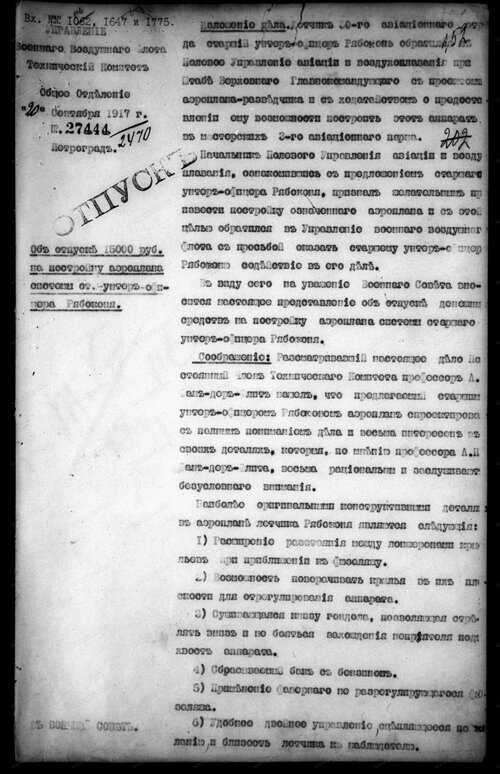
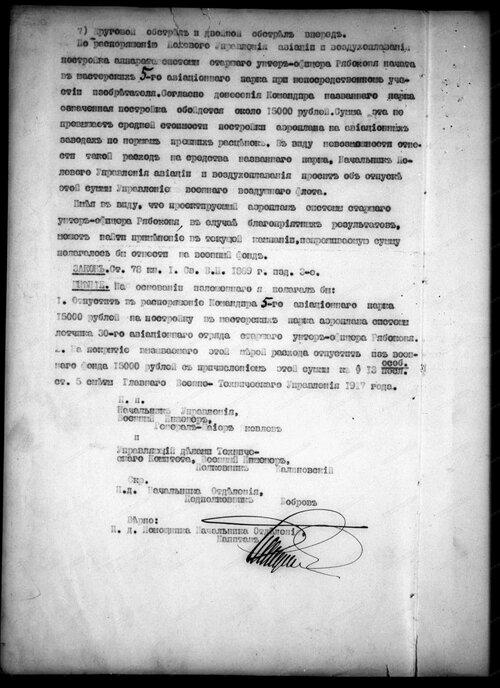
"Original construction details:
1) widening the distance between the wing spars when approaching the fuselage
2) the ability to turn the wings to adjust them (by V. Shavrov, "History of construction of airplanes in USSR to 1938", variable-sweep wing)
3) gondola tapering to the bottom, allowing you to shoot down.
4) droppable fuel tank
5) plywood fuselage
6) dual control
7) 360° sector of fire and dual fire in nose"
Bottleship
ACCESS: Secret
- Joined
- 30 June 2019
- Messages
- 493
- Reaction score
- 1,259
About Lyamin charger:




About use of single "Sunbeam" 150 HP engine (I think, "Sunbeam Crusader"), to rebuilt, for use of Lyamin charger. Working pressure in charger 2 atm or more. Power of upgrade "Sunbeam" - 200 hp at 1500 rpm, with 2 atm pressure (standart "Sunbeam" - 150 hp at 2200 rpm). Fuel consumption is less, as the pressure is higher and the efficiency is higher. Lyamin “at the beginning of the war” (1914?) successfully conducted experiments with a supercharger while in Holland.
This is most likely the first Russian supercharger ever built (1914?).
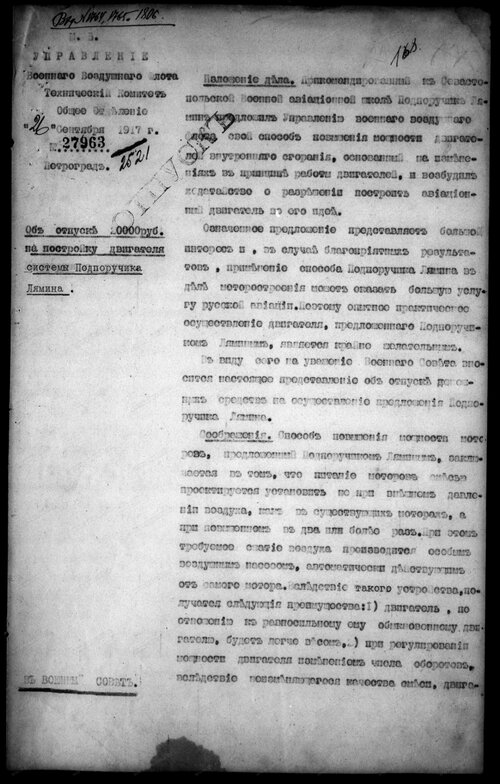
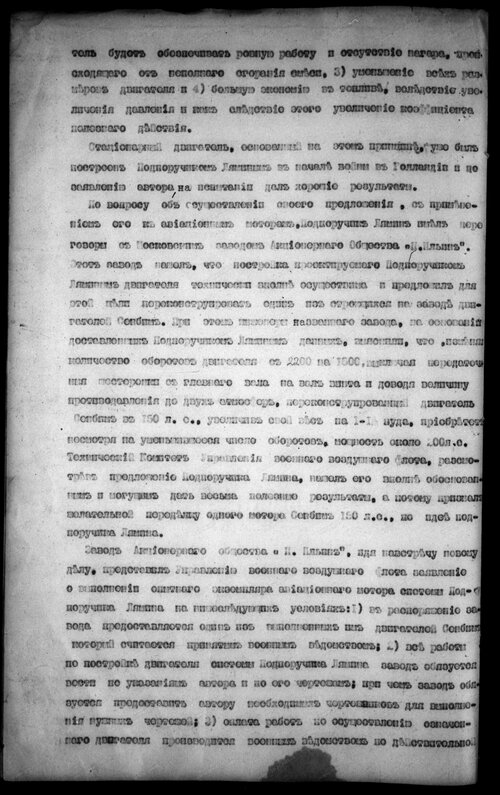
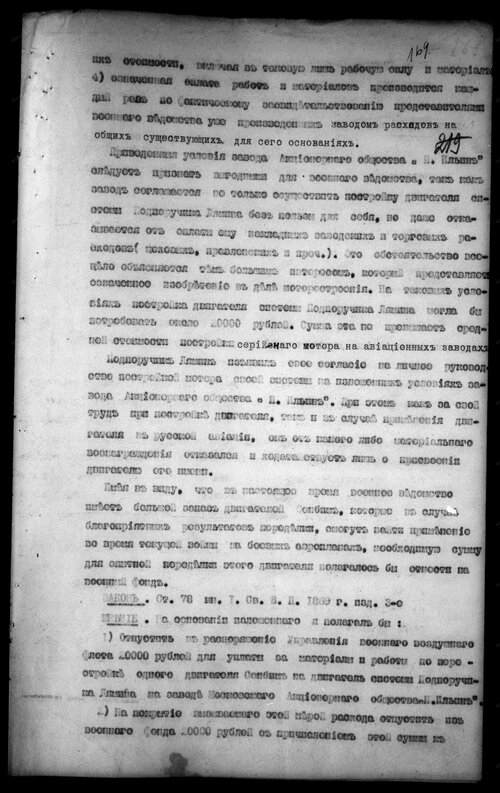
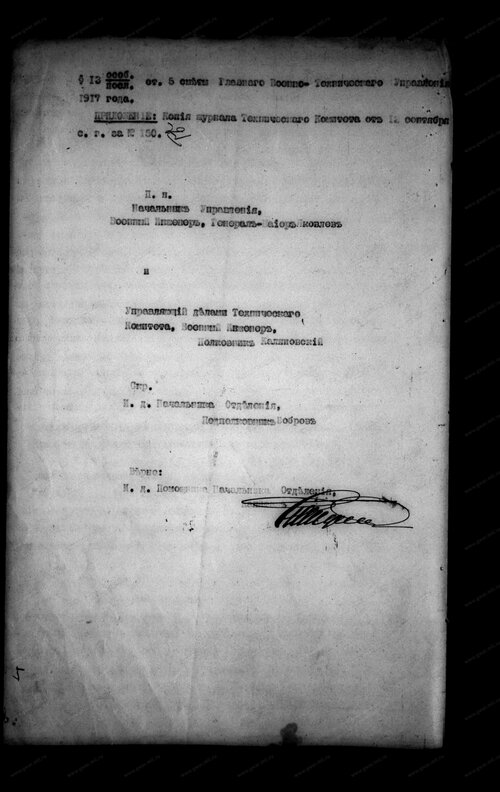
About use of single "Sunbeam" 150 HP engine (I think, "Sunbeam Crusader"), to rebuilt, for use of Lyamin charger. Working pressure in charger 2 atm or more. Power of upgrade "Sunbeam" - 200 hp at 1500 rpm, with 2 atm pressure (standart "Sunbeam" - 150 hp at 2200 rpm). Fuel consumption is less, as the pressure is higher and the efficiency is higher. Lyamin “at the beginning of the war” (1914?) successfully conducted experiments with a supercharger while in Holland.
This is most likely the first Russian supercharger ever built (1914?).
Bottleship
ACCESS: Secret
- Joined
- 30 June 2019
- Messages
- 493
- Reaction score
- 1,259
Bottleship
ACCESS: Secret
- Joined
- 30 June 2019
- Messages
- 493
- Reaction score
- 1,259
About A. Nesterov gas distribution mechanism for radial engines:

"The number of cylinders can be any odd number, but as the number of cylinders increases, the speed of the moving parts increases. Therefore, it is better to use 3- or 5-cylinder groups installed in several rows."
In fact, it is proposed here to create a large radial engine having 6-9-12-15 or 5-10-15-20 cylinders, to use of Nesterov mechanism.
Blueprints:




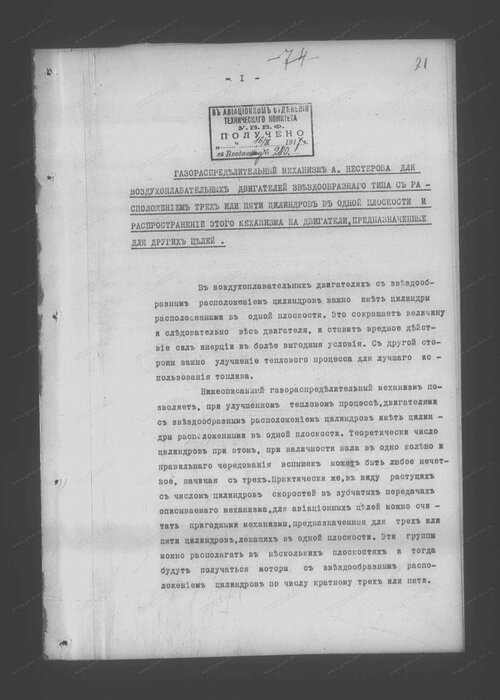
"The number of cylinders can be any odd number, but as the number of cylinders increases, the speed of the moving parts increases. Therefore, it is better to use 3- or 5-cylinder groups installed in several rows."
In fact, it is proposed here to create a large radial engine having 6-9-12-15 or 5-10-15-20 cylinders, to use of Nesterov mechanism.
Blueprints:
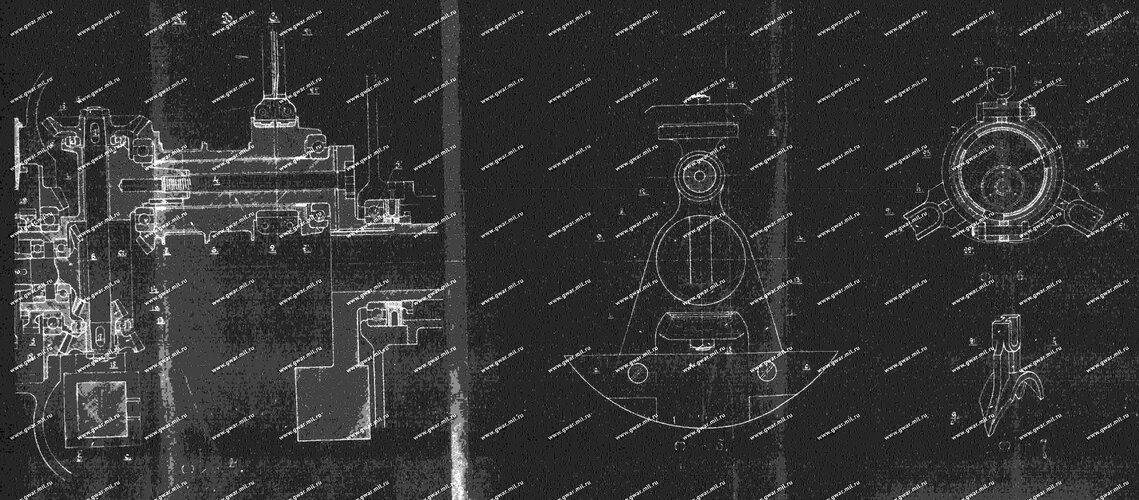
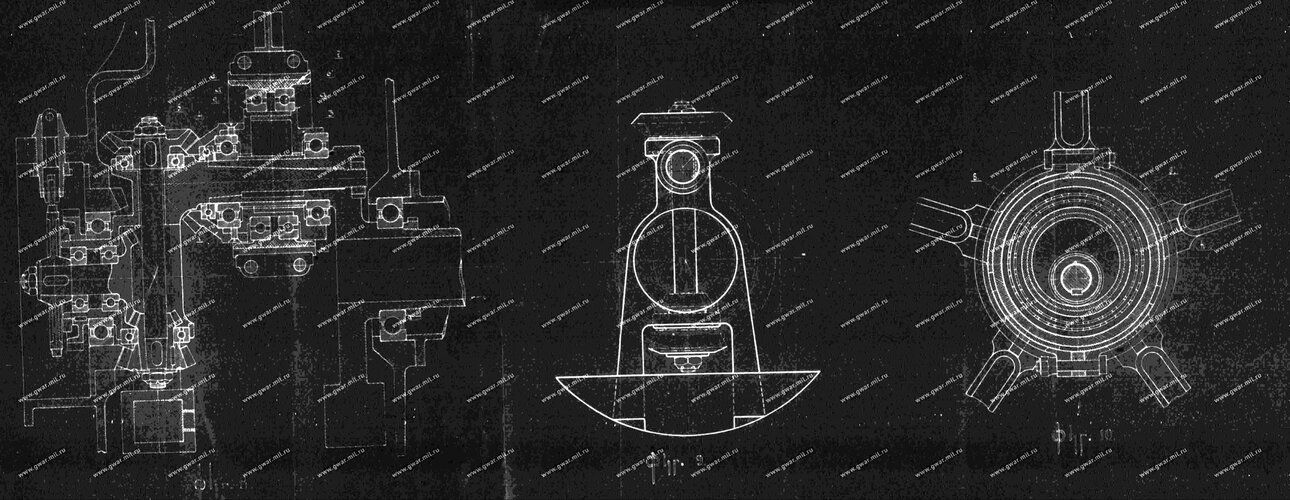
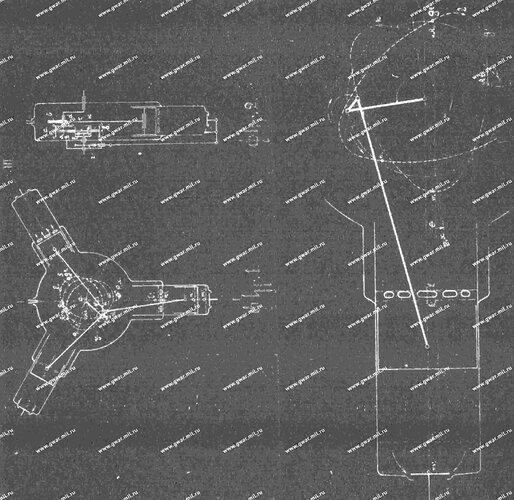
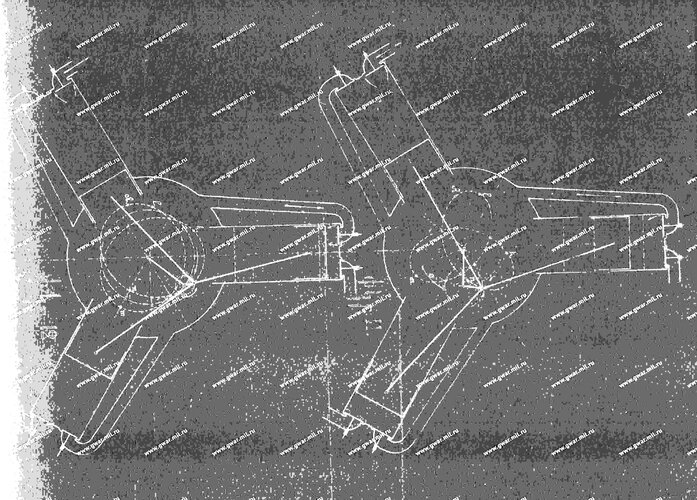
- Joined
- 26 May 2006
- Messages
- 34,558
- Reaction score
- 15,348
Hi,
Design for a naval reconnaissance seaplane or seaplane ship. Poland / Russia,
On July 15, 1909, Lew (Leon) Maciewicz gave a lecture on the type
of sea aircraft. He developed a design for a amphibious aircraft, and
presented the Russian military authorities with a project to use a
warship as an aircraft carrier, and developed a launch catapult
himself.
Design for a naval reconnaissance seaplane or seaplane ship. Poland / Russia,
On July 15, 1909, Lew (Leon) Maciewicz gave a lecture on the type
of sea aircraft. He developed a design for a amphibious aircraft, and
presented the Russian military authorities with a project to use a
warship as an aircraft carrier, and developed a launch catapult
himself.
samolotypolskie.pl - Maciewicz samolot
www.samolotypolskie.pl
- Joined
- 26 May 2006
- Messages
- 34,558
- Reaction score
- 15,348
Project of a military reconnaissance aircraft. Poland / Russia,
On November 7, 1914, Stefan Szymański sent a letter to the Main
Military and Technical Board (GWTU), in which he presented the aircraft
design. His offer was assessed at the meeting of GWTU on 4 December
1914.He presented a project of a small, high-speed combat monoplane
with a speed of up to 216 km / h. The aviator was supposed to lie down
and steer the dragline with his legs. The main airframe was designed in
such a way that it was possible to adjust it, and by changing the angle of
attack of the airfoils, flight control in the vertical and transverse planes.
Probably the angles of attack of the airfoil could be changed differently.
The high speed of flight was to ensure the safety of the aircraft in low-
altitude flights, 9-15 m above the battlefield, protecting it from fire.
Additionally, the plane could be armored from below.
General Nil L. Kirpiczew, presenting Szymański's project at the meeting
of the Committee, expressed the opinion that the modern airplanes with
a tiller system operated by the pilot's hands are more comfortable. He
also pointed out that too high speed of the plane's flight at low altitude
may make it difficult to observe the enemy's position. He asked to reject Szymański's proposal to start building his plane. This position was shared
by the Technical Committee. This answer was given to the inventor on December 11, 1914.
On November 7, 1914, Stefan Szymański sent a letter to the Main
Military and Technical Board (GWTU), in which he presented the aircraft
design. His offer was assessed at the meeting of GWTU on 4 December
1914.He presented a project of a small, high-speed combat monoplane
with a speed of up to 216 km / h. The aviator was supposed to lie down
and steer the dragline with his legs. The main airframe was designed in
such a way that it was possible to adjust it, and by changing the angle of
attack of the airfoils, flight control in the vertical and transverse planes.
Probably the angles of attack of the airfoil could be changed differently.
The high speed of flight was to ensure the safety of the aircraft in low-
altitude flights, 9-15 m above the battlefield, protecting it from fire.
Additionally, the plane could be armored from below.
General Nil L. Kirpiczew, presenting Szymański's project at the meeting
of the Committee, expressed the opinion that the modern airplanes with
a tiller system operated by the pilot's hands are more comfortable. He
also pointed out that too high speed of the plane's flight at low altitude
may make it difficult to observe the enemy's position. He asked to reject Szymański's proposal to start building his plane. This position was shared
by the Technical Committee. This answer was given to the inventor on December 11, 1914.
samolotypolskie.pl - Szymański samolot
www.samolotypolskie.pl
Bottleship
ACCESS: Secret
- Joined
- 30 June 2019
- Messages
- 493
- Reaction score
- 1,259
Alexander Petrovich Fedorov, 1896:
Weird flying machine with three types of "tubes" - horizontal, vertical (VTOL) and spiral (for horizontal maneuvering). "Tube" is "cold" jet engine, with steam or gas. Steam- or gas-generation machine. Actually - pseudo-jet steampunk VTOL 
Last edited:
Bottleship
ACCESS: Secret
- Joined
- 30 June 2019
- Messages
- 493
- Reaction score
- 1,259
In this book is written that in 1916-1917b F. A. Tsander began working on the "rocket-airplane" project. He presented this project in 1921. The plane was supposed to provide an exit into space, for this the wings and many other elements had to be made of combustible metal (if I understood correctly, this function was not originally included in the project).
 www.roscosmos.ru
It says here that Tsander invented a multistage rocket in 1912, and also that he invented to burn the "extra" material of the rocket back in 1909.
www.roscosmos.ru
It says here that Tsander invented a multistage rocket in 1912, and also that he invented to burn the "extra" material of the rocket back in 1909.


I wonder if this plane could be used as a military aircraft?
Also, I found information that Sikorsky in 1916 designed an all-metal four-engine monoplane, and allegedly Tupolev used this to develop TB-1 and TB-3, but there is no source. This is quite interesting because given the 600-hp Kireev engine, which was similar to the M-17, by the late 1910s the Russians could have built something like the TB-3.
Государственная корпорация по космической деятельности «Роскосмос»
I wonder if this plane could be used as a military aircraft?
Also, I found information that Sikorsky in 1916 designed an all-metal four-engine monoplane, and allegedly Tupolev used this to develop TB-1 and TB-3, but there is no source. This is quite interesting because given the 600-hp Kireev engine, which was similar to the M-17, by the late 1910s the Russians could have built something like the TB-3.
- Joined
- 26 May 2006
- Messages
- 34,558
- Reaction score
- 15,348
says here that Tsander invented a multistage rocket in 1912, and also that he invented to burn the "extra" material of the rocket back in 1909.
Also;
Bottleship
ACCESS: Secret
- Joined
- 30 June 2019
- Messages
- 493
- Reaction score
- 1,259
Unknown light-weight 100 hp engine, Moskow, 1900-1910s (V16?):

 goskatalog.ru
goskatalog.ru
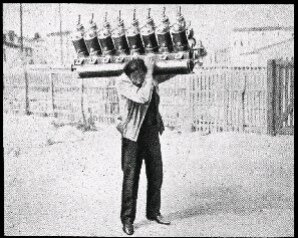
Государственный каталог Музейного фонда Российской Федерации
Все музеи России, шедевры и коллекции музеев: живопись, графика, фотографии, скульптура, археология. Карта музеев.
- Joined
- 1 May 2007
- Messages
- 2,591
- Reaction score
- 1,937
Antoinette V-16 engine, 1907, see :-
From William Pierce's 'Old Machine Press' blog :-

 oldmachinepress.com
oldmachinepress.com
cheers,
Robin.
From William Pierce's 'Old Machine Press' blog :-

Antoinette (Levavasseur) Aircraft Engines
Léon Levavasseur’s V-8 and V-16 Antoinette aircraft engines powered the aircraft used by many early pioneer aviators in Europe.
cheers,
Robin.
Bottleship
ACCESS: Secret
- Joined
- 30 June 2019
- Messages
- 493
- Reaction score
- 1,259
I came across information about plans to create an aluminum plant and provide it with electricity:
 From the book "Development of the Electric Power Industry of the Russian Empire":
From the book "Development of the Electric Power Industry of the Russian Empire":

Based on this information, the Russians were going to build a plant for the production of aluminum, and next to build a large power plant to provide the plant with energy. The power of the hydroelectric power station was supposed to be 60,000 hp, which equals 158,823 thousand kWh, for the production of 1 ton of aluminum, 20-30 thousand kWh are required, 1/100 of the hydroelectric power plant is enough to produce at least 53 tons of aluminum, in fact it was possible the creation of a really large aluminum plant.
In addition, in the city of Kolchugino, they tried to start the production of aluminum, there was also a laboratory that produced up to several hundred tons of aluminum per year for the needs of the chemical industry, and another aluminum plant somewhere in the south of Russia, for which they were looking for a site.

Волховстройка: от замысла до запуска
К 90-летию Волховской ГЭС. История создания Волховской гидроэлектростанции начинается с истории волховских порогов. Река Волхов имела большое значение в жизни волховской земли.
volhovogni.ru
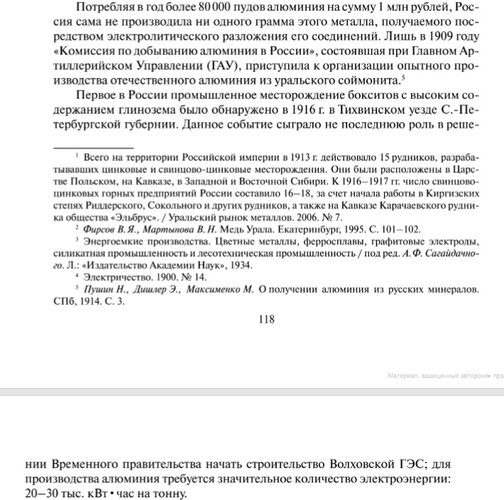
Based on this information, the Russians were going to build a plant for the production of aluminum, and next to build a large power plant to provide the plant with energy. The power of the hydroelectric power station was supposed to be 60,000 hp, which equals 158,823 thousand kWh, for the production of 1 ton of aluminum, 20-30 thousand kWh are required, 1/100 of the hydroelectric power plant is enough to produce at least 53 tons of aluminum, in fact it was possible the creation of a really large aluminum plant.
In addition, in the city of Kolchugino, they tried to start the production of aluminum, there was also a laboratory that produced up to several hundred tons of aluminum per year for the needs of the chemical industry, and another aluminum plant somewhere in the south of Russia, for which they were looking for a site.
- Joined
- 26 May 2006
- Messages
- 34,558
- Reaction score
- 15,348
Based on this information, the Russians were going to build a plant for the production of aluminum, and next to build a large power plant to provide the plant with energy. The power of the hydroelectric power station was supposed to be 60,000 hp, which equals 158,823 thousand kWh, for the production of 1 ton of aluminum, 20-30 thousand kWh are required, 1/100 of the hydroelectric power plant is enough to produce at least 53 tons of aluminum, in fact it was possible the creation of a really large aluminum plant.
In addition, in the city of Kolchugino, they tried to start the production of aluminum, there was also a laboratory that produced up to several hundred tons of aluminum per year for the needs of the chemical industry, and another aluminum plant somewhere in the south of Russia, for which they were looking for a site.
Again,that's not proper section for this Info.
Bottleship
ACCESS: Secret
- Joined
- 30 June 2019
- Messages
- 493
- Reaction score
- 1,259
This is directly related to aviation, since aluminum production was created in many respects for aviation. There are some documents here, correspondence with Vickers and testing of duralumin for the needs of aviation (as far as I know, a large plant near the city of Tikhvin was also created mainly to meet the needs of aviation), this was supposed to greatly facilitate the design of aircraft:Based on this information, the Russians were going to build a plant for the production of aluminum, and next to build a large power plant to provide the plant with energy. The power of the hydroelectric power station was supposed to be 60,000 hp, which equals 158,823 thousand kWh, for the production of 1 ton of aluminum, 20-30 thousand kWh are required, 1/100 of the hydroelectric power plant is enough to produce at least 53 tons of aluminum, in fact it was possible the creation of a really large aluminum plant.
In addition, in the city of Kolchugino, they tried to start the production of aluminum, there was also a laboratory that produced up to several hundred tons of aluminum per year for the needs of the chemical industry, and another aluminum plant somewhere in the south of Russia, for which they were looking for a site.
Again,that's not proper section for this Info.
Here is information about the testing of aluminum structures by Professor Druzhinin, for aviation:
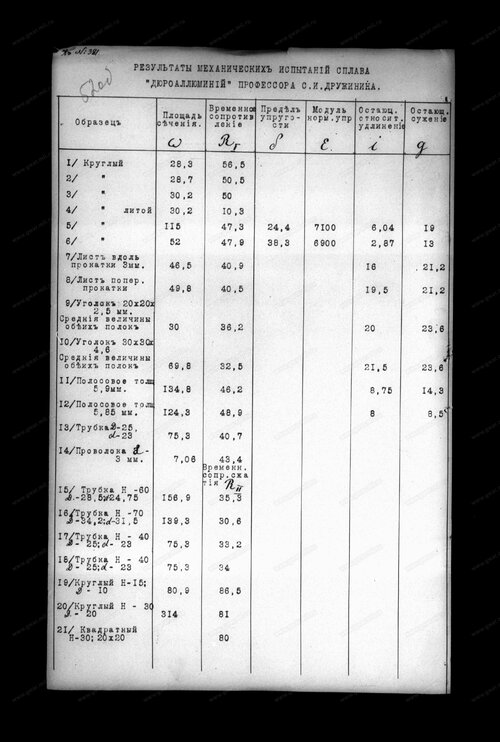
That is, Sikorsky's "all-metal monoplane" could not only be a concept "if we had the necessary materials, we could work in this direction", but also be a really developed project.
Bottleship
ACCESS: Secret
- Joined
- 30 June 2019
- Messages
- 493
- Reaction score
- 1,259
Bottleship
ACCESS: Secret
- Joined
- 30 June 2019
- Messages
- 493
- Reaction score
- 1,259
From, The Osprey Encyclopedia of Russian Aircraft 1875-1995,
has anyone a pictures to Dybovski aircraft ?.
Уголок неба ¦ Дыбовский Дельфин
airwar.ru
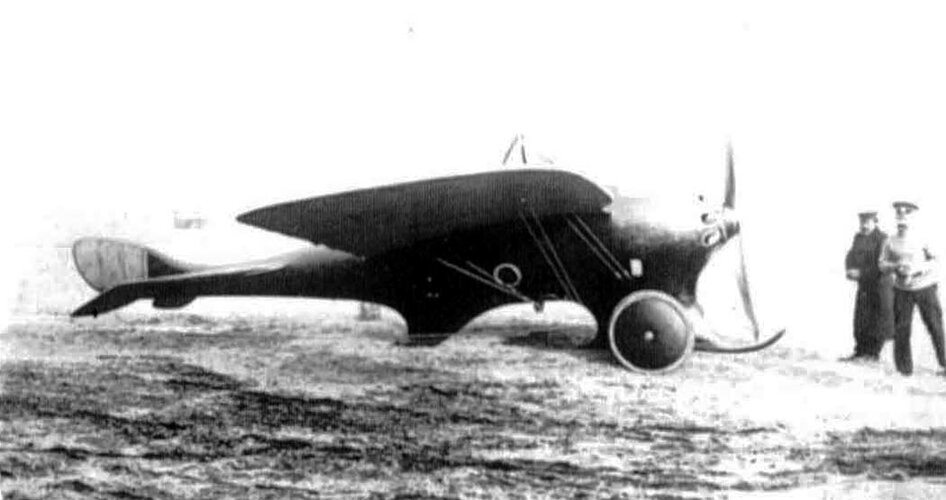
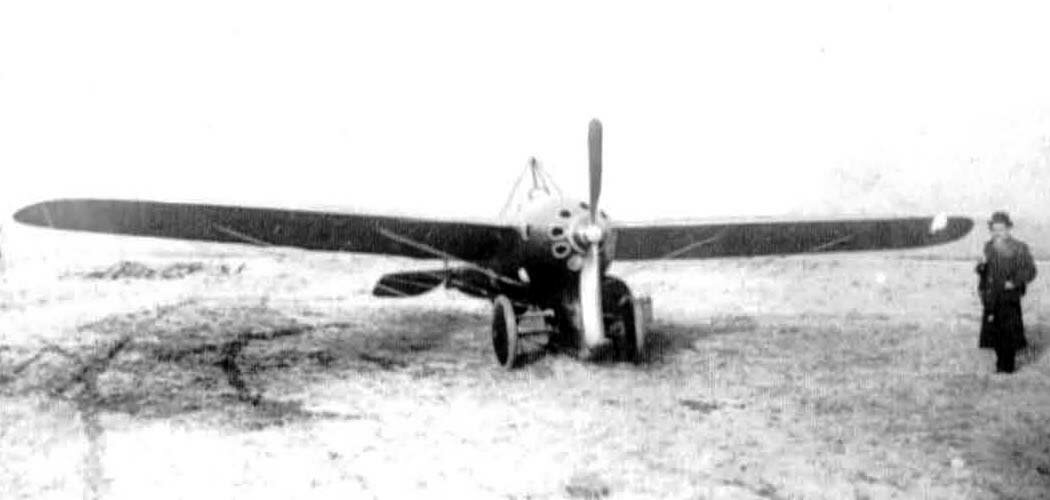
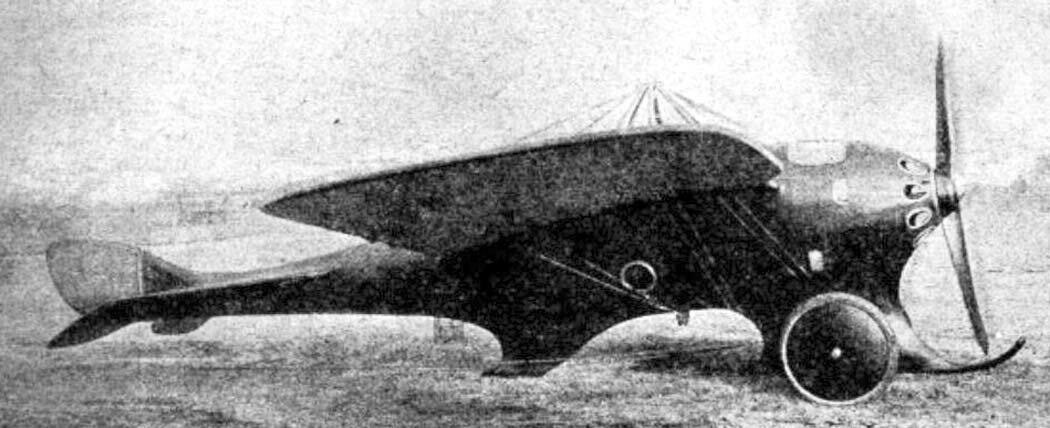
Bottleship
ACCESS: Secret
- Joined
- 30 June 2019
- Messages
- 493
- Reaction score
- 1,259
Description of "Air ship", giant battle and transport VTOL with armoured "cabin", Vasiliy Perlovskiy, 25th January 1915:


Wing area - 400 square sazhen / 1821 square meters, "cabin" area - 100 square sazhen / 455 square meters, power - 1200 hp, load - 1500 pood / 24.57 ton, speed - from 5 to 150 versta per hour / 5.33-160 kmph, flyght time - 24 hour, range - 3600 versta / 3841 km, "cabin" is below the level of the wings, "can be mount machine guns, cannons and any weapon you like for the mass extermination of enemies and instilling panic in them...", "the armored cabin makes it completely safe from enemy shells from all sides".
Why are there no blueprints for this monster?!
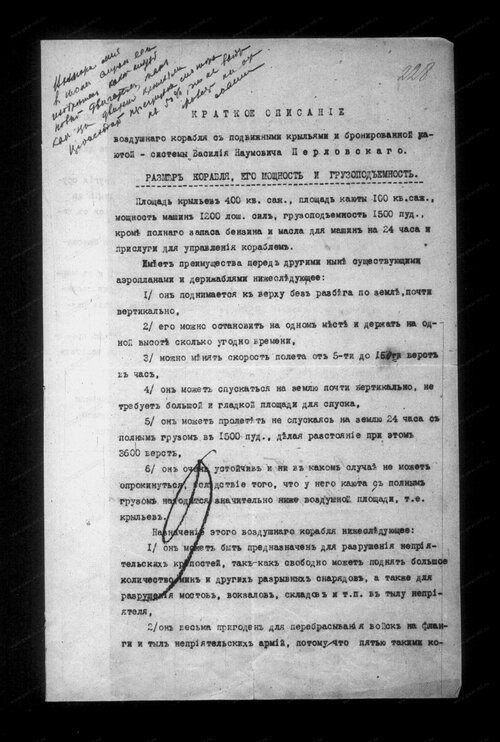
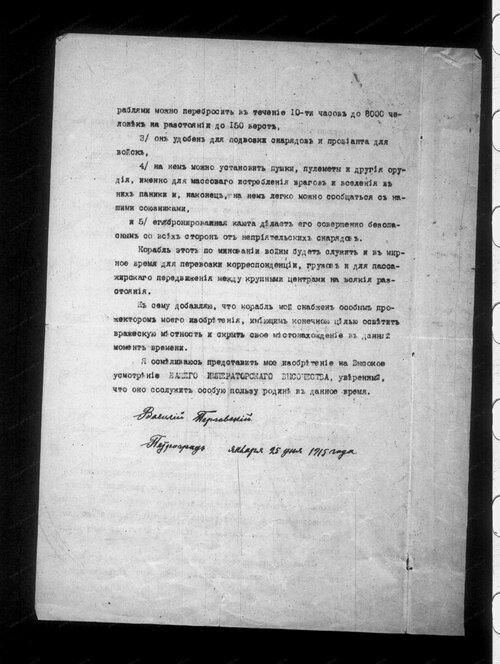
Wing area - 400 square sazhen / 1821 square meters, "cabin" area - 100 square sazhen / 455 square meters, power - 1200 hp, load - 1500 pood / 24.57 ton, speed - from 5 to 150 versta per hour / 5.33-160 kmph, flyght time - 24 hour, range - 3600 versta / 3841 km, "cabin" is below the level of the wings, "can be mount machine guns, cannons and any weapon you like for the mass extermination of enemies and instilling panic in them...", "the armored cabin makes it completely safe from enemy shells from all sides".
Why are there no blueprints for this monster?!
Last edited:
Similar threads
-
Izhorski Giant Triplane Heavy Bomber Project
- Started by hesham
- Replies: 2
-
Early STOL and VTOL Projects From Imperial Russia
- Started by hesham
- Replies: 28
-
-
-
IJN Specification 12-Shi (E12/E13, Reconnaissance Seaplane, 1937)
- Started by blackkite
- Replies: 25

